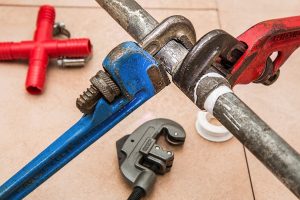Few homeowners want to spend any more time than they absolutely have to thinking about their sewer system. However, like every other part of a modern house, your sewer system will degrade over time without regular maintenance, and a line cleaning will almost certainly have to be done sooner or later. A poorly maintained system can lead to severe problems; having sewage backing up into your home is an enormous headache and even a health risk. Be on the lookout for these common warning signs of obstructed sewer lines.
1) Percolating Bubbles in Toilets / Gurgling Sounds in Bathroom Drains
If you look and listen hard enough, you can often hear your sewer system telling you that it’s time for a cleaning. Bubbles rising up through the toilet and gurgling sounds in tub and shower drains are clear signs of a backed-up sewer system. While there is a host of potential plumbing problems to worry about in your home, these particular symptoms are exclusively connected to sewer line issues.
2) Debris and Contaminants in Toilet or Bath Water
When you have a blockage in any of your plumbing lines, you can expect to see excess water coming up through your toilets or out of your bath / shower faucets. While this water is clear when your supply lines are clogged, backflow from a clogged sewer line will frequently come with debris, sand, pebbles, or even fecal matter. This is an absolutely unmistakable sign of a sewer line blockage.
Common Causes of a Clogged Sewer Line
1) Internal Debris
The toilet is the direct line into your sewer system. If large items (or accumulations of smaller items) enter the sewer line simultaneously, they can result in a partial or complete blockage. Common culprits include sanitary napkins, accumulations of toilet paper, and clothing. These problems are easily resolved with a conventional line cleaning.
2) Tree Roots
With old (or poorly-maintained) sewer systems, it’s possible for nearby tree roots to infiltrate your sewer line. Small cracks give roots the access they need, and as they grow over time they can partially or completely obstruct the line’s flow. This is a more difficult problem to get rid of, but it is fixable.
Cleaning Out the Sewer Line
With the right equipment, it’s possible to try and handle a clogged sewer line on your own. In virtually all homes, there’s an accessible port into the sewer line located somewhere close to the house. This gives you a place to introduce a plumber’s snake.
Sewer line work is a dirty business, as you might well expect. If you want to clean out your line yourself, make sure you take every possible precaution to protect yourself from potential contaminants you might bring up in the process of snaking.
Without the right tools and protective equipment — or if you’d prefer not to get an up close and personal look at sewage — it’s probably a better idea to rely on a professional plumber to resolve obstructed sewer lines. This is typically a very easy problem for experienced pros to handle, and the cost to you should be minimal.
